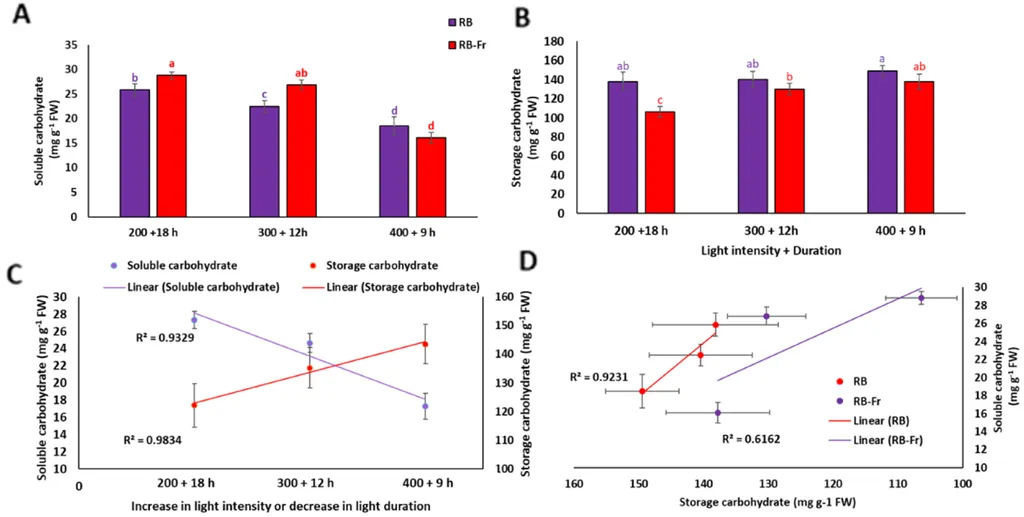In the world of precision agriculture, where every variable can make a difference, a recent study has shed light on how light exposure can significantly influence the phytochemical profiles of basil plants. Led by Luana Pulvirenti from the Istituto di Chimica Biomolecolare, Consiglio Nazionale delle Ricerche (CNR) in Catania, Italy, the research published in *Frontiers in Agronomy* (which translates to *Frontiers in Agronomy*) explores the impact of different photoperiod regimes on the composition of volatile organic compounds (VOCs) and the accumulation of polyphenols and anthocyanins in four basil genotypes.
The study, conducted under controlled hydroponic conditions, aimed to address the growing demand for year-round high-quality basil with consistent phytochemical profiles. Basil, a widely used aromatic plant, is known for its rich profile of bioactive secondary metabolites, which contribute to its functional properties. As consumer demand for consistent, high-quality basil increases, understanding how to manipulate these properties becomes crucial.
The researchers cultivated basil plants for 26 days in a programmable mini-climate cabinet, subjecting them to different photoperiod regimes: 6:4, 16:8, and 18:6 hours of light:dark. They then analyzed the phytochemical composition using HS-GC/MS and HPLC-UV techniques.
The results were intriguing. The Italian genotype under the 6:4 photoperiod exhibited the highest concentration of total polyphenols, including chicoric, rosmarinic, and caffeic acids. “This suggests that shorter light exposure can enhance the accumulation of these beneficial compounds,” Pulvirenti noted. Similarly, anthocyanin levels in the Rosie genotype decreased with longer light exposure, indicating that light duration can significantly impact pigment accumulation.
In terms of VOCs, the Thai genotype showed a consistently high content of estragole, regardless of light exposure, while eucalyptol and β-pinene were predominant in the other genotypes. This consistency in VOC profiles could be particularly appealing to the commercial sector, where consistent flavor and aroma are key selling points.
The study’s findings have significant implications for the agricultural and commercial sectors. By modulating photoperiod, farmers and growers can fine-tune the phytochemical composition of basil, ensuring consistent, high-quality produce year-round. This precision agriculture approach not only supports farm-to-table innovation but also aligns with the principles of sustainable and efficient food production.
As Pulvirenti explained, “This work demonstrates that photoperiod modulation can serve as a controlled abiotic stressor to enhance the phytochemical composition of basil. It provides a framework for controlled-environment modulation of basil tissue phytochemistry, enabling consistent, ‘ready-to-eat’ tissue quality with stable functional properties.”
The research published in *Frontiers in Agronomy* opens up new avenues for precision agriculture, offering a scientific basis for optimizing plant growth conditions to meet market demands. As the agricultural sector continues to evolve, such studies will be instrumental in shaping future developments, ensuring that we can meet the growing demand for high-quality, consistent produce.

